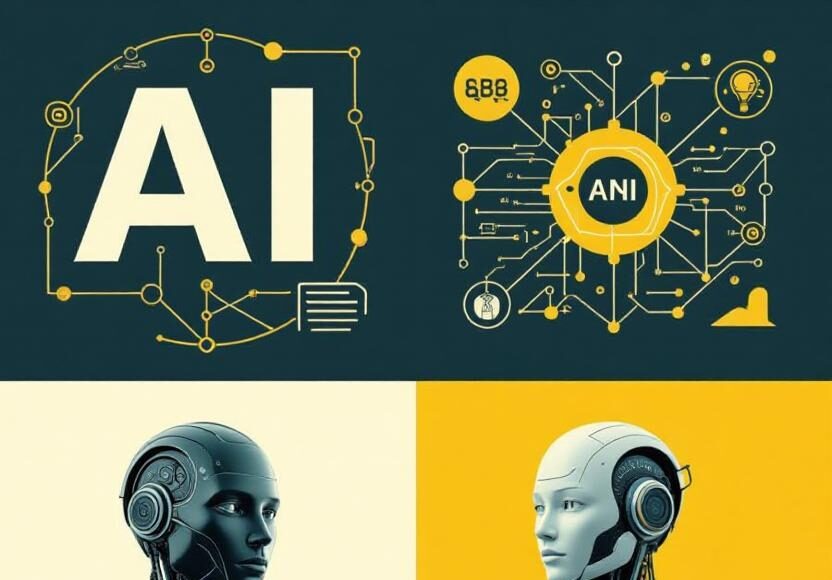“Artificial Intelligence: From its incredible power and remarkable promise to its potential peril, this thinking machine continues to shape the future of humanity.”
Introduction
Artificial Intelligence (AI) has become one of the most revolutionary forces in human history. From simple calculators to machines that can think, learn, and even create art, AI is transforming every aspect of our daily lives. Once confined to science fiction stories and theoretical research, artificial intelligence has now entered the mainstream, influencing how we work, communicate, travel, and even make decisions.
At its core, AI refers to the ability of a computer or machine to perform tasks that typically require human intelligence. These tasks include problem-solving, reasoning, learning from experience, recognizing patterns, understanding language, and making decisions. AI systems are designed to simulate human cognitive processes—but often with far greater speed and precision.
Today, AI is not only a technological innovation but also a social, economic, and ethical challenge. It raises deep questions about the future of work, privacy, creativity, and even what it means to be human. This article explores the evolution, functions, benefits, risks, and future possibilities of artificial intelligence, aiming to give a complete understanding of this powerful and controversial field.
1. The Evolution of Artificial Intelligence
The journey of artificial intelligence is a story of human imagination and innovation. The dream of creating intelligent machines is not new—it has been a part of human mythology and philosophy for centuries. Ancient Greek legends spoke of mechanical servants built by the god Hephaestus, while stories of automata appeared in Chinese, Egyptian, and Arabic cultures.
However, AI as a scientific discipline began in the mid-20th century. In 1950, British mathematician Alan Turing asked a groundbreaking question: “Can machines think?” He proposed the famous Turing Test, a method for evaluating whether a machine can exhibit human-like intelligence.
In 1956, during the Dartmouth Conference, computer scientist John McCarthy coined the term Artificial Intelligence. This event marked the official birth of the AI field. The early researchers were optimistic, believing that machines capable of human-like reasoning were just a few decades away. Early programs like ELIZA (a simple chatbot) and SHRDLU (a language understanding program) demonstrated the potential of computers to simulate conversation and logic.
However, limited computing power and lack of data led to the first AI winter in the 1970s—a period of reduced funding and interest. The second AI winter came in the late 1980s when expectations again outpaced results.
The modern AI revolution began in the 2010s, powered by machine learning, deep learning, and big data. The explosion of available digital information, combined with advanced computing hardware like GPUs, allowed algorithms to process data at an unprecedented scale. Breakthroughs such as Google’s DeepMind, ChatGPT, and OpenAI’s DALL·E showed that AI could understand language, generate art, and even outperform humans in complex games like chess and Go.
From research labs to smartphones, AI had finally arrived.
2. How Artificial Intelligence Works
Artificial Intelligence works by processing data, identifying patterns, and making predictions or decisions based on that information. The core idea is that machines can learn from experience much like humans do.
a. Machine Learning (ML)
Machine Learning is the backbone of modern AI. Instead of being explicitly programmed for every task, ML systems “learn” from data. They use algorithms to detect patterns and improve over time. For example, an email spam filter learns from examples of spam and non-spam messages to accurately sort new emails.
b. Deep Learning
Deep Learning is a type of machine learning that uses neural networks—algorithms modeled after the human brain. These networks consist of layers of “neurons” that process information hierarchically. Deep learning powers image recognition, speech recognition, and language translation.
c. Natural Language Processing (NLP)
NLP allows computers to understand and generate human language. It’s what enables chatbots, translation software, and virtual assistants like Siri or Alexa to communicate naturally. Modern NLP models, such as ChatGPT, are trained on vast amounts of text to simulate human-like conversation.
d. Computer Vision
Computer vision allows AI to “see” and interpret visual data such as images or videos. It’s used in facial recognition, autonomous vehicles, and medical imaging.
e. Robotics
3. Applications of Artificial Intelligence
AI has become an integral part of modern life. Its applications extend across virtually every field imaginable.
a. Healthcare
AI is revolutionizing medicine. Algorithms can detect diseases like cancer or diabetes earlier than doctors can, based on medical images or genetic data. AI also assists in drug discovery, robotic surgery, and patient monitoring, making healthcare more precise and personalized.
b. Education
In education, AI creates adaptive learning systems that tailor content to each student’s needs. Intelligent tutoring systems, automated grading, and AI-based learning analytics help teachers track student progress and improve educational outcomes.
c. Business and Finance
AI helps companies analyze markets, detect fraud, and improve customer service. Chatbots handle millions of customer inquiries daily. In finance, AI is used for algorithmic trading, risk management, and credit scoring.
d. Transportation
Self-driving cars, drones, and AI-based traffic management systems are transforming transportation. These technologies promise safer roads, reduced congestion, and improved logistics efficiency.
e. Agriculture
Farmers use AI for crop monitoring, pest control, and precision farming. Drones equipped with AI can assess soil health and predict harvest yields, reducing waste and increasing productivity.
f. Entertainment
AI is also reshaping entertainment. Streaming services like Netflix and Spotify use AI to recommend content. Generative AI models create music, scripts, and even digital art, merging creativity with computation.
g. Cybersecurity
AI protects digital systems by identifying unusual patterns of activity that may signal a cyberattack. It enables faster threat detection and automated responses to security breaches.
h. Environmental Protection
AI models predict weather patterns, monitor deforestation, and optimize energy use, helping tackle climate change and resource management challenges.
4. The Advantages of Artificial Intelligence
AI brings a multitude of benefits that make it an indispensable part of modern civilization:
- Automation and Efficiency – AI automates repetitive or dangerous tasks, saving time and reducing human error.
- Accuracy and Precision – In fields like healthcare or engineering, AI provides precise results that exceed human capabilities.
- Cost Reduction – Automated systems reduce labor costs and operational inefficiencies.
- 24/7 Availability – Unlike humans, AI systems never tire and can operate continuously.
- Personalization – AI customizes experiences, from online shopping to learning, improving user satisfaction.
- Enhanced Decision-Making – Data-driven AI insights help businesses and governments make smarter, evidence-based decisions.
- Innovation – AI drives creativity in art, music, and design, opening new horizons for expression and invention.
5. The Challenges and Risks of Artificial Intelligence
Despite its promise, AI poses serious challenges that cannot be ignored.
a. Job Displacement
Automation threatens to replace human workers in manufacturing, customer service, and even creative fields. While AI creates new opportunities, it also demands new skills, leaving some workers behind.
b. Data Privacy
AI systems require massive amounts of data, raising concerns about privacy and surveillance. Personal information can be misused by corporations or governments.
c. Bias and Discrimination
If AI is trained on biased data, it can produce biased outcomes. This has led to unfair practices in hiring, law enforcement, and lending.
d. Security Risks
AI can be weaponized—for example, in autonomous drones or cyberattacks. Deepfakes can spread misinformation, eroding trust in digital media.
e. Lack of Transparency
Many AI systems operate as “black boxes,” meaning it’s difficult to understand how they make decisions. This lack of transparency undermines accountability.
f. Ethical Dilemmas
AI challenges our moral frameworks. Should an autonomous car prioritize the lives of passengers or pedestrians in an accident? These questions highlight the need for ethical guidelines.
g. Dependence on AI
Over-reliance on AI could reduce human skills and creativity. As we delegate more decision-making to machines, we risk losing control over technology that shapes our world.
6. The Ethics and Governance of AI
Ensuring that AI benefits humanity requires strong ethical principles and governance frameworks. Many organizations and governments are developing policies to ensure that AI is transparent, fair, and aligned with human values.
Ethical AI should follow key principles:
- Transparency – Systems must be explainable and understandable.
- Fairness – AI must avoid bias and discrimination.
- Accountability – Developers and organizations should be responsible for the outcomes of their AI systems.
- Privacy – Data collection and usage must respect user rights.
- Human Control – AI should assist, not replace, human decision-making.
The European Union, the United States, and countries around the world are establishing regulations to ensure AI is used responsibly. International cooperation is essential because AI is a global technology with global consequences.
7. The Future of Artificial Intelligence
The future of AI is full of promise and uncertainty. Researchers are working toward Artificial General Intelligence (AGI)—a level of AI capable of performing any intellectual task a human can. While we are not there yet, progress is rapid.
Emerging trends include:
- Generative AI: Models that create text, images, and videos are redefining creativity and communication.
- AI in Climate Action: Predictive models help manage resources and mitigate climate risks.
- AI in Medicine: Personalized treatment plans based on genetic data will become common.
- Human–AI Collaboration: AI will act as a partner, enhancing creativity and productivity rather than replacing humans.
- Ethical AI Development: Governments and companies are focusing on building AI systems that are trustworthy and aligned with human values.
However, experts warn that without regulation and ethical oversight, AI could become dangerous. The challenge of the future is to harness AI’s power while preventing its misuse.
Conclusion
Artificial Intelligence is no longer a futuristic dream—it is a reality that shapes our present and defines our future. From healthcare to education, from business to art, AI has proven its ability to improve efficiency, accuracy, and creativity. It represents humanity’s greatest technological achievement, but also its greatest challenge.
As AI systems grow more powerful, the responsibility lies with us—to guide their development with wisdom, empathy, and foresight. We must ensure that AI remains a tool for empowerment, not exploitation; a force for equality, not inequality.
The future of AI will depend not just on technological progress, but on human values. If used responsibly, AI can unlock limitless possibilities—helping us build a smarter, fairer, and more sustainable world for generations to come.












